Mahendra of Nepal
Mahendra Bir Bikram Shah Dev (Nepali: महेन्द्र वीर विक्रम शाह; 11 June 1920 – 31 January 1972) was King of Nepal from 1955 to 1972.[3] Mahendra was born on 11 June 1920 to King Tribhuvan of Nepal. Although Tribhuvan was nominally king since 1911, the royal family had been held captive in Narayanhity Palace since the rise of the prominent Rana dynasty. In 1940, he married Indra Rajya Lakshmi Devi, daughter of General Hari Shamsher Jang Bahadur Rana. Mahendra had three sons, Birendra, Gyanendra, and Dhirendra and three daughters Shanti, Sharada, and Shobha. Crown Princess Indra died in 1950. In 1952, Mahendra married Indra's younger sister, Ratna Rajya Lakshmi Devi. This marriage produced no children as King Mahendra had married on the condition his personal life should not hinder his national duties and the queen agreed to be childless.
| Mahendra Bir Bikram Shah Dev | |||||
|---|---|---|---|---|---|
 | |||||
| King of Nepal | |||||
| Reign | 13 March 1955 – 31 January 1972 | ||||
| Coronation | 2 May 1956 | ||||
| Predecessor | Tribhuvan | ||||
| Successor | Birendra | ||||
| Born | 11 June 1920 Narayanhity Royal Palace Kathmandu, Kingdom of Nepal | ||||
| Died | 31 January 1972 (aged 51) Diyalo Bangala, Bharatpur, Kingdom of Nepal[1] | ||||
| Spouse | Crown Princess Indra Rajya Lakshmi Devi (m. 1940–1950, her death) Queen Ratna Rajya Lakshmi Devi (m. 1952–1972, his death) | ||||
| Issue (Details) | Shanti Singh, Rani of Bajhang Princess Sharada Birendra, King of Nepal Gyanendra, King of Nepal Princess Shobha Prince Dhirendra[2] | ||||
| |||||
| Dynasty | Shah dynasty | ||||
| Father | Tribhuvan Bir Bikram Shah | ||||
| Mother | Kanti Rajya Lakshmi Devi | ||||
| Religion | Hinduism | ||||
Reign
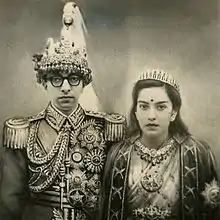
Mahendra succeeded Tribhuvan as King of Nepal. He was crowned on 2 May 1956.[4][5]
1960 coup d'etat
On 15 December 1960, the then King Mahendra suspended the constitution, dissolved the elected parliament,[6] dismissed the cabinet,[7] [8] imposed direct rule and imprisoned the then-prime minister B. P. Koirala and his closest government colleagues.[9][10] Mahendra instituted a Panchayat hierarchical system of village, district and national councils,[11] a variant of guided democracy. He pursued a foreign policy of neutrality between China and India.
Panchayat system (1962–72)
In 1960, King Mahendra used his emergency powers and took charge of the State once again claiming that the Congress government had fostered corruption, promoted party above national interest and failed to maintain law and order. Political parties were outlawed[12] and all prominent political figures, including the Prime Minister were put behind bars. Civil liberties were curtailed and press freedom muzzled. King Mahendra then promulgated a new constitution in December 1962 introducing the Panchayat system. The Panchayat System was a party-less "guided" democracy in which the people could elect their representatives, while real power remained in the hands of the monarch.[13] Dissenters were called anti-national elements.[14]
At first, the Nepali Congress leadership propounded a non-violent struggle against the new order and formed alliances with several political parties, including the Gorkha Parishad and the United Democratic Party. Early in 1961, however, the king had set up a committee of 4 officials from the Central Secretariat to recommend changes in the constitution that would abolish political parties and substitute a "National Guidance" system based on local panchayat led directly by the king.
Development policy
Mahendra implemented a land reform policy, which provided land to many landless people. The Mahendra Highway (also called East-West Highway) that runs along the entire Terai belt in southern Nepal was constructed during his reign. He launched the Back to the Village National Campaign in 1967 which was one of his largest rural development efforts. He also played a key role in making Nepal a member of the United Nations in 1955.
British Field Marshal
King Mahendra was appointed as a British Field Marshal in 1962.
King Mahendra and Queen's visit to US
King Mahendra and Queen Ratna visited the US in 1960 and 1967. In 1960 they were greeted by President Dwight D. Eisenhower and in 1967 they were greeted by President Lyndon B Johnson and Mrs. Johnson in Washington DC in 1967. The royal couple of Nepal was greeted with the 'guard of honor'.[15][16]
Issue
| Name | Birth | Death | Spouse | Children |
|---|---|---|---|---|
| Princess Shanti | 20 November 1940 | 1 June 2001 (aged 60) | Deepak Jang Bahadur Singh | Binod Singh Pramod Singh Chhaya Devi |
| Princess Sharada | 2 February 1942 | 1 June 2001 (aged 59) | Khadga Bikram Shah | Bikash Bikram Shah Deebas Bikram Shah Ashish Bikram Shah |
| King Birendra | 29 December 1945 | 1 June 2001 (aged 55) | Queen Aishwarya | King Dipendra Princess Shruti Prince Nirajan |
| King Gyanendra | 7 July 1947 | Living (age 74) | Queen Komal | Crown prince Paras Princess Prerana |
| Princess Shova | 17 January 1949 | Living (age 73) | Mohan Bahadur Shahi | None |
| Prince Dhirendra | 14 January 1950 | 1 June 2001 (aged 51) | Princess Prekshya Jaya Shah Pandey Shirley Greaney | Princess Puja Princess Dilasha Princess Sitashma Shreya Shah Ushaana Laela Shah |
Hobbies
Mahendra went in for various activities like noblemen of his era and subsequent eras. King Mahendra wrote songs and poems. He is also called the first lyricist of Nepal by some sources.[17] He penned Lolayeka Tee, Gajalu Tee Thula Thula Aakha, Garchin Pukar Aaama, Aakashma Tirmire, Kina Kina Timro Tasbir, etc. which were later sung by Gulam Ali and Lata Mangeshar.[18]
Death and succession
Mahendra suffered a massive second heart attack whilst on a winter hunting trip in Chitwan where he was attended to by his trusted Physicians Dr Mrigendra Raj Pandey and Dr Sachey Kumar Pahari. King Mahendra was in a stable but critical condition and eventually breathed his last at Diyalo Bangala, the royal palace in Bharatpur on 31 January 1972. The King's body was subsequently flown to Kathmandu by helicopter in preparation for the State Funeral.
His son Birendra ascended the throne on 24 February 1975 but perished in the Nepalese royal massacre on 1 June 2001.
Honors
- National
- Sovereign of the Order of Nepal Pratap Bhaskara
- Sovereign of the Order of Ojaswi Rajanya
- Sovereign of the Order of Nepal Taradisha
- Sovereign of the Order of Tri Shakti Patta
- Sovereign of the Order of Gorkha Dakshina Bahu
- Most Glorious Mahendra Chain (26 February 1961)
- Commemorative Silver Jubilee Medal of King Tribhuvan (11 December 1936)[19]
- Foreign
.svg.png.webp) Iran: Grand Collar of the Order of Pahlavi, 3 July 1960
Iran: Grand Collar of the Order of Pahlavi, 3 July 1960.svg.png.webp) Iran: Commemorative Medal of the 2500th Anniversary of the founding of the Persian Empire, 14 October 1971.[20]
Iran: Commemorative Medal of the 2500th Anniversary of the founding of the Persian Empire, 14 October 1971.[20]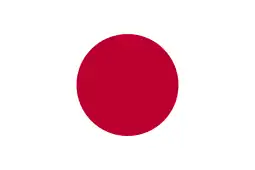 Japan: Collar of the Order of the Chrysanthemum, 19 April 1960
Japan: Collar of the Order of the Chrysanthemum, 19 April 1960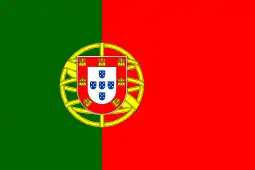 Portugal: Grand Cross of the Order of Saint James of the Sword, 13 July 1960[21]
Portugal: Grand Cross of the Order of Saint James of the Sword, 13 July 1960[21] France: Grand Cross of the Order of Legion of Honour, 24 February 1956
France: Grand Cross of the Order of Legion of Honour, 24 February 1956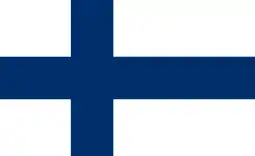 Finland: Grand Cross with Collar of the Order of the White Rose, 1958
Finland: Grand Cross with Collar of the Order of the White Rose, 1958.svg.png.webp) Belgium: Grand Cross of the Order of Leopold II, 1964
Belgium: Grand Cross of the Order of Leopold II, 1964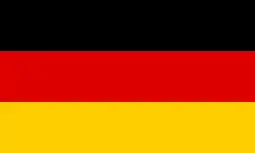 Germany: Grand Cross Special Class of the Order of Merit of the Federal Republic of Germany, 1964
Germany: Grand Cross Special Class of the Order of Merit of the Federal Republic of Germany, 1964.svg.png.webp) Kingdom of Laos: Collar of the Order of the Million Elephants and the White Parasol, 1970
Kingdom of Laos: Collar of the Order of the Million Elephants and the White Parasol, 1970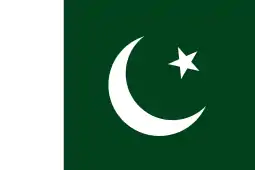 Pakistan: Nishan-e-Pakistan, 1970
Pakistan: Nishan-e-Pakistan, 1970 Netherlands Grand Cross of the Order of the Netherlands Lion, 25 April 1967.
Netherlands Grand Cross of the Order of the Netherlands Lion, 25 April 1967. United Kingdom: Royal Victorian Chain, 26 February 1961
United Kingdom: Royal Victorian Chain, 26 February 1961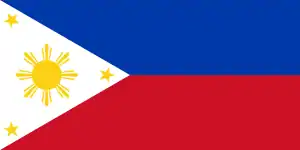 Philippines: Collar of the Order of Sikatuna, Rank of Raja, 1971.
Philippines: Collar of the Order of Sikatuna, Rank of Raja, 1971.
Ancestry
| Ancestors of Mahendra of Nepal | |||||||||||||||||||||||||||||||||||||||||||||||||||||||||||||||||||||||||||||||||||||||||||||||||||||||||||||||||||||||||||||||||||||||||||||||||||||||||||||||||||||||||||||||||||||||||||||||||||||||||||||||||||||||||||||||||||||||||||||||||||||||||||||||||||||||||||||||||||||||||||||||||||||||||||||||||||||||||||||||||||||||||||||||||||||||||||||||||||||||||||||||||||||||||||||||||||||||||||||||||||||||||||||||||||||||||||||||||||||||||||||||||||||||||||||||||||||||||||||||||||||||||||||||||||||||||||||||||||||||||||||||||||||||||||||
|---|---|---|---|---|---|---|---|---|---|---|---|---|---|---|---|---|---|---|---|---|---|---|---|---|---|---|---|---|---|---|---|---|---|---|---|---|---|---|---|---|---|---|---|---|---|---|---|---|---|---|---|---|---|---|---|---|---|---|---|---|---|---|---|---|---|---|---|---|---|---|---|---|---|---|---|---|---|---|---|---|---|---|---|---|---|---|---|---|---|---|---|---|---|---|---|---|---|---|---|---|---|---|---|---|---|---|---|---|---|---|---|---|---|---|---|---|---|---|---|---|---|---|---|---|---|---|---|---|---|---|---|---|---|---|---|---|---|---|---|---|---|---|---|---|---|---|---|---|---|---|---|---|---|---|---|---|---|---|---|---|---|---|---|---|---|---|---|---|---|---|---|---|---|---|---|---|---|---|---|---|---|---|---|---|---|---|---|---|---|---|---|---|---|---|---|---|---|---|---|---|---|---|---|---|---|---|---|---|---|---|---|---|---|---|---|---|---|---|---|---|---|---|---|---|---|---|---|---|---|---|---|---|---|---|---|---|---|---|---|---|---|---|---|---|---|---|---|---|---|---|---|---|---|---|---|---|---|---|---|---|---|---|---|---|---|---|---|---|---|---|---|---|---|---|---|---|---|---|---|---|---|---|---|---|---|---|---|---|---|---|---|---|---|---|---|---|---|---|---|---|---|---|---|---|---|---|---|---|---|---|---|---|---|---|---|---|---|---|---|---|---|---|---|---|---|---|---|---|---|---|---|---|---|---|---|---|---|---|---|---|---|---|---|---|---|---|---|---|---|---|---|---|---|---|---|---|---|---|---|---|---|---|---|---|---|---|---|---|---|---|---|---|---|---|---|---|---|---|---|---|---|---|---|---|---|---|---|---|---|---|---|---|---|---|---|---|---|---|---|---|---|---|---|---|---|---|---|---|---|---|---|---|---|---|---|---|---|---|---|---|---|---|---|---|---|---|---|---|---|---|---|---|---|---|---|---|---|---|---|---|---|---|---|---|---|---|---|---|---|---|---|---|---|---|---|---|---|---|---|---|---|---|---|---|---|---|---|---|---|---|---|---|---|---|---|---|---|---|---|---|---|---|---|---|---|---|---|---|---|---|---|---|---|---|---|---|---|---|---|---|---|---|---|---|---|---|---|---|---|---|---|---|---|---|---|---|---|---|---|---|---|---|---|---|---|---|---|---|---|---|---|---|---|---|---|---|---|---|---|---|---|
| |||||||||||||||||||||||||||||||||||||||||||||||||||||||||||||||||||||||||||||||||||||||||||||||||||||||||||||||||||||||||||||||||||||||||||||||||||||||||||||||||||||||||||||||||||||||||||||||||||||||||||||||||||||||||||||||||||||||||||||||||||||||||||||||||||||||||||||||||||||||||||||||||||||||||||||||||||||||||||||||||||||||||||||||||||||||||||||||||||||||||||||||||||||||||||||||||||||||||||||||||||||||||||||||||||||||||||||||||||||||||||||||||||||||||||||||||||||||||||||||||||||||||||||||||||||||||||||||||||||||||||||||||||||||||||||
Notes
- ^1 Possibly no heir for the time period of 1911 through 1920. Previous Crown Prince: Tribhuvan Bir Bikram Shah, from 1906 to 1911.
Regnal Titles
References
- "King Mahetidra of Nepal Dead; Hindu on Throne for 15 Years". The New York Times. 31 January 1972.
- "Late King Mahendra with his family".
- "1954 50p 1rs king mahendra".
- "Selected Originals Nepal - Coronation Of…".
- Pathé, British. "Nepal – Coronation of King Mahendra". Retrieved 20 July 2016.
- "Good or bad, right or wrong, for better or for worse, King Mahendra bequeathed a legacy that has shaped the course of political events in Nepal for four long decades".
- Whelpton, John (2005). The monarchy in full control: 1961–1979. ISBN 978-0521804707.
- Mishra, S. G. (1982). "Royal Coup 1960 in Nepal". Proceedings of the Indian History Congress, 43, 754–765.
- "Bisheshwor Prasad Koirala". Spinybabbler.org. 8 September 1914. Archived from the original on 11 November 2013. Retrieved 26 August 2011.
- "Permanent rebellion: The story of B.P. Koirala". Hinduonnet.com. Archived from the original on 22 November 2004. Retrieved 26 August 2011.
{{cite web}}: CS1 maint: unfit URL (link) - "Down came the king...Etihas ko ek kal khanda...Navaraj Subedi".
- The Constitution of Nepal, 1962 (PDF). Kathmandu, Nepal: Government of Nepal. 1962. pp. 3–5.
- "The Panchayat System under King Mahendra". Library of Congress Country Studies. Retrieved 4 September 2013.
- "The Koirala Complex". Republica. Archived from the original on 1 November 2013. Retrieved 31 October 2013.
- Archived at Ghostarchive and the Wayback Machine: "Late King Mahendra and Queen's visit to USA in 1967". Retrieved 23 July 2015.
- "Nepal - Visits by Foreign Leaders - Department History - Office of the Historian". Retrieved 4 February 2022.
- "60 Years of Nepali Cinema : King Mahendra – the First Lyricist". Khasokhas. 8 May 2017. Retrieved 6 March 2021.
- "Songwriter Profile - Late King Mahendra Bir Bikram Shah Dev". Music Cafe Nepal. Retrieved 6 March 2021.
- "ODM of Nepal: King Tribhuvan Silver Jubilee Medal 1935". Retrieved 20 July 2016.
- "Grand State Banquet". Archived from the original on 5 March 2016. Retrieved 20 July 2016.
- Presidência da República
External links
 Media related to Mahendra Bir Bikram Shah Dev at Wikimedia Commons
Media related to Mahendra Bir Bikram Shah Dev at Wikimedia Commons
.svg.png.webp)